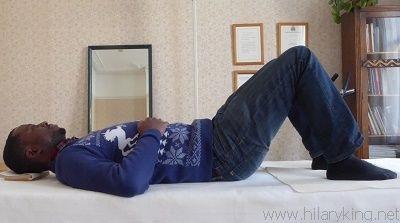Faulty Sensory Appreciation comes about when we do not receive accurate sensory feedback about our physical condition and use. This feedback comes to us through our kinaesthetic and proprioceptive sense mechanisms.
As Alexander discovered: ‘I had proved in my own case and in that of others that instinctive control and direction of use had become so unsatisfactory, and the associated feeling so untrustworthy as a guide, that is could lead us to do the very opposite of what we wished to do or thought we were doing’.
F M Alexander ~ The Use of the Self p23
This concept has been given a clever and up to date description: ‘Think of Faulty Sensory Appreciation as Fake News from your senses‘
‘The Alexander Technique for Young Musicians’ p4
This can be illustrated by someone who habitually slumps over when sitting. This slumped position will ‘feel right’ to them even though they can see in a mirror, for instance, that they have ‘bad posture’. The converse is also true. If this person comes to an Alexander lesson and the teacher helps them to re-align their body use, the pupil may initially experience this new way of sitting as ‘feeling wrong’.
The fact that our usual body sensations and feelings ‘feel right’ to us, makes learning the Alexander Technique on our own, even with the help of books, extremely hard to do. This is because we continually revert back to our misuse, which feels familiar and therefore ‘right’ to us, so it is very hard to bring about any change in the way we use ourselves, because the new improved use initially feels wrong to us. With an Alexander teacher’s help and guidance we can, with time, re-educate our bodies so that we gain a more accurate sensory appreciation and understanding about our use.
